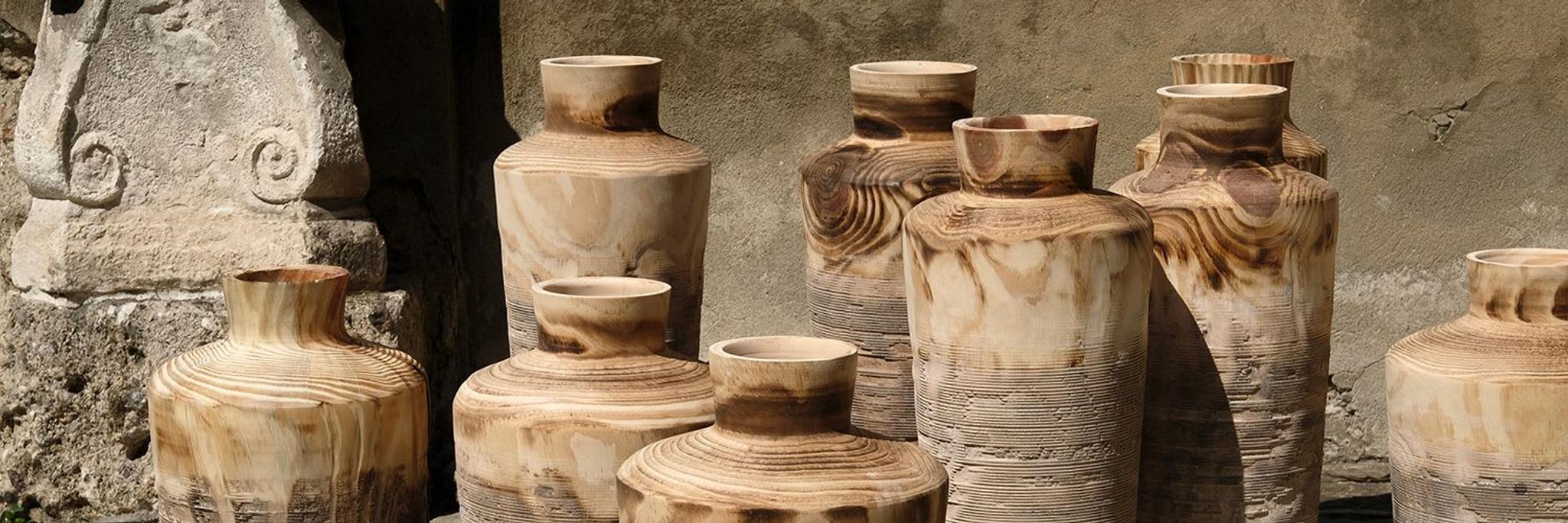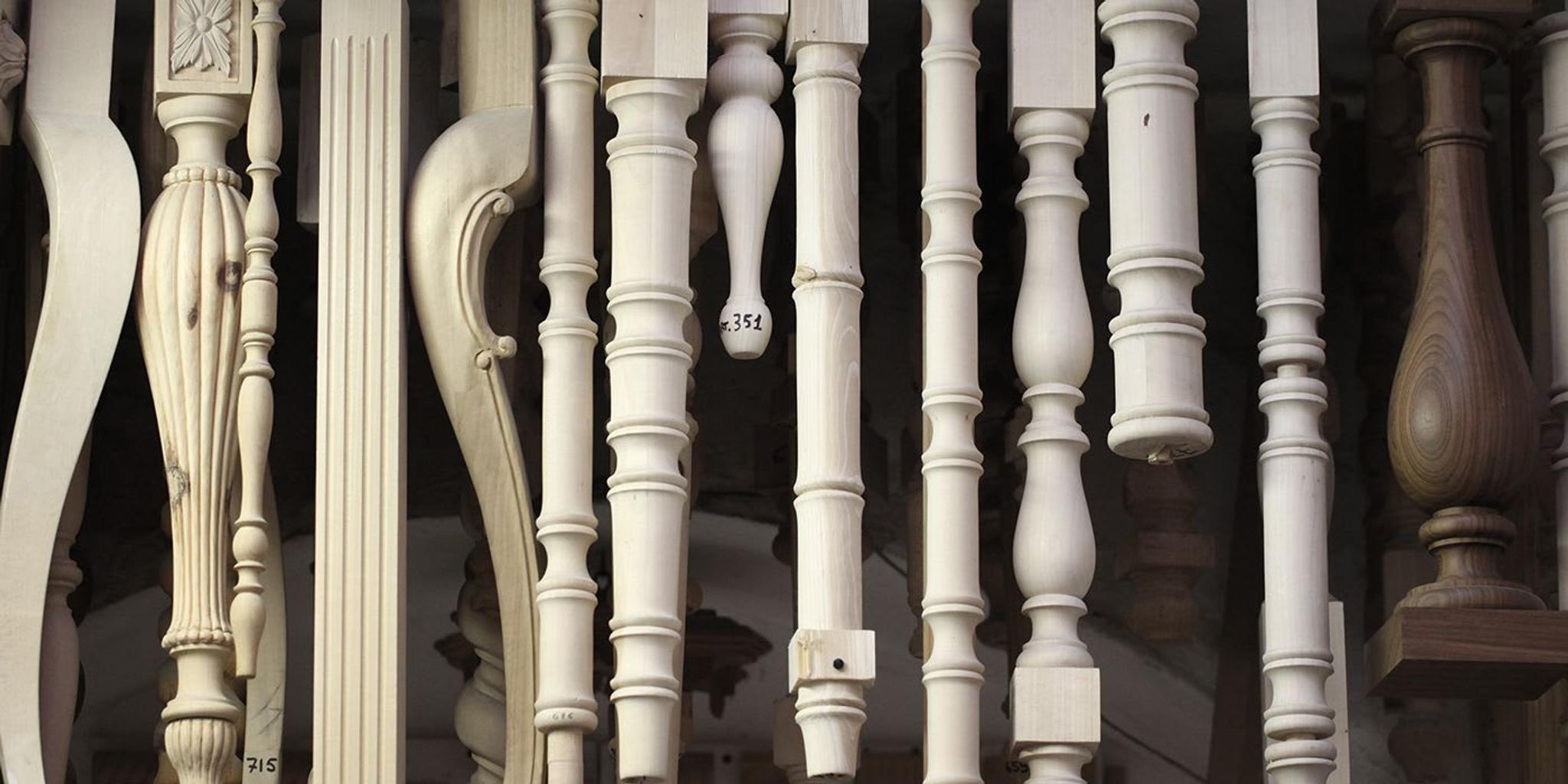
Mauro Varotti
Depero's Dream Console
12.200 EUR
Ships in 5-6 weeks

While there are plenty of spectacular materials around the globe, nothing exudes the charm of wood. One of the most sought-after materials, wood can be crafted in unimaginable ways. The natural imperfections of the ring and grain structure lend to its bespoke appeal.
Wood craft possesses a level of sensitivity, emotion and precision
Woodcraft requires phases of research and a study of the complexity of the materials. By the virtue of being strong, durable, light and flexible, wood is associated with high-quality furniture and facilitates experimentation.
The Italian expertise of woodcraft is irreplaceable! From intricate carvings to detailed inlay work, woodwork has widely been an outlet for new ideas and endless possibilities. Its color, veins, natural texture and various other characteristics make it ideal for anything from exteriors, furniture, sculptures to frames.
Among the breath-taking landscapes of Italy, craftsmen work tirelessly to create masterpieces. Discover the rich tradition of woodcraft, now with a modern twist.
The traditional Italian ways of working with wood are attractive because of the numerous fascinating techniques practiced by talented craftsmen. Wood craft requires a level of expertise and a passion for innovation.
The traditional Italian ways of working with wood are attractive because of the numerous fascinating techniques practiced by talented craftsmen. Wood requires a level of expertise and a passion for innovation.
Whether seen on the doors of ancient cathedrals, vintage jewelry boxes or wall clocks, Intarsio or Inlay is the most precious Italian technique of wood craft. The design, colors and the composition, all are important aspects of the craft.
The best way to visualize the Intarsio is as a mosaic in which small pieces of different-colored wood are pieced together within a base. The technique involves carving a chunk from the wooden framework and ornamenting contrasting pieces into the surface.
Intarsio begins with transferring hand-drawn designs onto a wooden template which is then carved. Next, the artisan chooses different species of wood-based mainly depending on their color contrast. Intarsio makers essentially use a variety of saws, planes, clamps, chisels to achieve the finesse while carving intricate shapes. The enchanting beauty of the local Intarsio tradition is sure to charm you; discoverMauro Varotti and more artisans that work with this technique to create unique pieces of art.
Tornio is the Italian word for ‘lathe’. As a craft, wood turning has a long history in Italy, and it continues to be practiced as a valuable technique across different regions. It requires a great deal of skill to become an accomplished wood turner; one piece could take several hours to produce. Harvested from a local plantation, the wood is attached to the lathe machine and rotated, until the wood turner removes chips from the block, little by little until it transforms into a beautiful piece of art.
The wood turning accentuates the surface and creates objects of curvature like bowls, columns, handles etc. Classic chairs by the hands of wood turners like Fratelli Levaggi, are strong iconic pieces of modern design.
Any piece of wood carved into lovely patterns pays tribute to the rich artistic history of Italy. The traditional Tuscan wood sculptures are the most prominent technique of wood craft. A Tuscan wood craftsman holds high regard for creating anything from wood statues to the special one-of-a-kind piece, one has always wanted. The carving effect is achieved by sculpting and removing material through a series of repeated actions: shaping, adding, selecting, removing and refining.
Giuseppe Rivadossi, is well known for his high-end unconventional furniture like the bubble-finish cabinets to cloud and wave-patterned dressers. Immerse yourself in Bartolozzi e Maioli Bottega d'Arte's wood works that tell a tale, and the intricate frames straight out of Carlo Puccini’s Florentine workshop.
Characterized by its octagonal pattern, Vienna straw is a particularly common technique used for making traditional seating, due to its comfort, durability and aesthetic appeal. The most known and iconic design chairs now have a new lease on life. Thonet’s collection pushes the boundaries of experimentation with the tactility and character of the straw. Inspired by the Bahuas technique, the incredible duo of Colé, have unmistakably rendered Italian warmth into the Vienna Straw technique.
The Midollino technique might seem old, but it is surely relevant even through the coming years. Utilizing a simple procedure, long and thin strips of fibers are cut and soaked in water to make it flexible and durable. Once they are intertwined with each other, it forms a series of dense weaves with great character. Bottega Intreccio gives a new life to this technique, and an international appeal to the pieces.
The Italian wood craftsmen have been perfecting their skills for centuries. The significance of wood as material runs through different artistic periods in Italian history and each region has developed a unique style. Explore the journey of traditional wood craft in Italy from Alpines to Tuscan hamlets.
Trentino, among the Alpines of Italy, has a profound love for pine wood craft which dates right to the middle ages. Heavy snowfall during the cold winter months, made it inaccessible for the locals to travel, which strongly encouraged an indoor activity of creating a local craft. Carving wood into pieces of furniture, the decor was a source of income and self-sustainability. Combining generations of knowledge and technique, the artisans transformed this raw material into iconic objects.
Tuscany is long known for its excellence in wood carving and inlay since the time Florentine churches were decorated with Intarsia doors and furniture. Rich in olive wood and walnut wood, the long and strong Tuscan wood craft traditions have fascinated many generations.

A peek into Tuscan tradition to modern Italian designs, each product is a passionate effort by the artisans to create unique functional and decor objects with exquisite wood varieties.